Andrew Cartmel's Blog, page 34
November 9, 2014
Charlie Countryman by Matt Drake
 The Necessary Death of Charlie Countryman is one of the best films of the year. Under this unnecessarily unwieldy title lies a small but perfect cinematic gem — a minor masterpiece. Shia LaBeouf stars as the eponymous Charlie, and he has never been better. With his soulful, hangdog face he instantly commands the audience's sympathy.
The Necessary Death of Charlie Countryman is one of the best films of the year. Under this unnecessarily unwieldy title lies a small but perfect cinematic gem — a minor masterpiece. Shia LaBeouf stars as the eponymous Charlie, and he has never been better. With his soulful, hangdog face he instantly commands the audience's sympathy.Charlie Countryman is essentially the story of an emotionally confused young American tourist who visits Bucharest (the capital of Romania, and a fantastically photogenic city) where he becomes embroiled in an adventure of love, murder and mayhem.
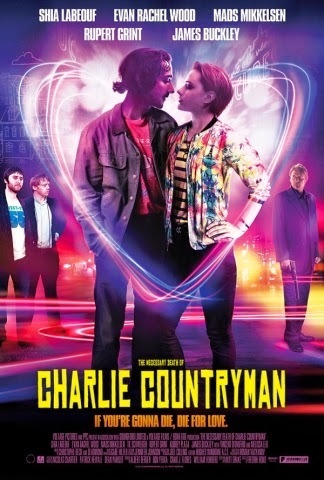 But on top of that, the movie has a supernatural spin. It turns out that Charlie can see the spirits of the recently deceased. Indeed, he's gone to Bucharest because the shade of his mother has suggested it's just thing he needs to do.
But on top of that, the movie has a supernatural spin. It turns out that Charlie can see the spirits of the recently deceased. Indeed, he's gone to Bucharest because the shade of his mother has suggested it's just thing he needs to do.I was ambivalent about this fantasy element to the film. It almost seemed expendable. Yet it also provided crucial turning points in the plot — and some of the best gags in the picture. Because Charlie Countryman is one very funny movie, utterly madcap.
 Almost as soon as he lands in Bucharest, Charlie falls in love with Gabi, a ravishing cellist. But Gabi has a dark side. Her ex (in fact, she's still married to him) is a homicidal drug dealer called Nigel, and he isn't pleased to have Charlie on the scene...
Almost as soon as he lands in Bucharest, Charlie falls in love with Gabi, a ravishing cellist. But Gabi has a dark side. Her ex (in fact, she's still married to him) is a homicidal drug dealer called Nigel, and he isn't pleased to have Charlie on the scene...This is a lustrous, sumptuous film magnificently photographed by Roman Vasyanov (a Russian cinematographer who recently did the Brad Pitt war movie Fury).
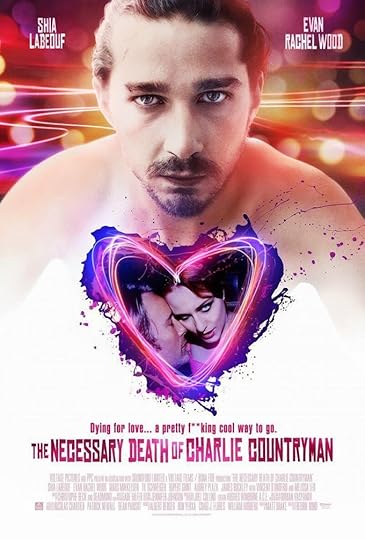 The director is Fredrik Bond who is making his stunning feature debut here. He previously worked on a film about the musician Moby (who gets a thank you in the closing credits).
The director is Fredrik Bond who is making his stunning feature debut here. He previously worked on a film about the musician Moby (who gets a thank you in the closing credits).And the outstandingly fresh, engaging and wacky script was written by Matt Drake whose most recent screenwriting credit was on Project X, a memorable little picture about a teenage party which explodes into catastrophe when word of it goes viral on social media. I see hundreds of movies every year, but Project X stuck in my memory and now I wonder if that was because of Drake's contribution. He's clearly a writer to be reckoned with.
As Charlie's love interest, Evan Rachel Wood is gorgeous — positively radiant. And deeply convincing — I thought she must be Romanian until I checked her name in the credits. It's an odd, backhanded compliment to say her accent was so authentic that I found it confusing. (I thought she was saying "leave" when she was saying "live". Or was it the other way around?) Wood is a stunner. I last sighted her in a pivotal role in The Ides of March and I'm about to see her as the poisonous daughter Veda in the HBO mini series of James M. Cain's novel Mildred Pierce. I'm looking forward to it.
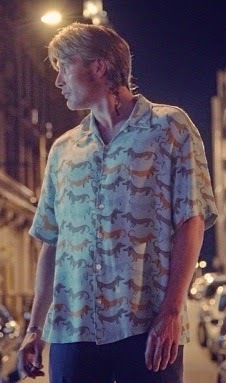
The heavy of the piece — and Gabi's husband — is Mads Mikkelsen, a Danish actor who was so great in A Royal Affair and The Hunt. He also played the bad guy in Casino Royale. Here he is being bad again. He's magnificent; savagely menacing even when he's wearing a shirt printed with a pattern of cartoon dachshunds. (The inventive costume design is by Jennifer Johnson who worked on Hard Candy.)
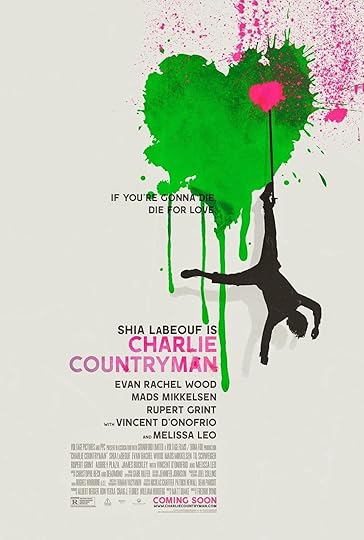 And Rupert Grint (best known as Harry Potter's sidekick) and James Buckley (hugely famed in England for his comedy The Inbetweeners) also appear as a couple of delightfully drug-addled young British tourists who share a hostel with Charlie and drag him along to a strip club, where things go horribly awry...
And Rupert Grint (best known as Harry Potter's sidekick) and James Buckley (hugely famed in England for his comedy The Inbetweeners) also appear as a couple of delightfully drug-addled young British tourists who share a hostel with Charlie and drag him along to a strip club, where things go horribly awry...Catch Charlie Countryman on the big screen while you can. It won't be around for long. It's opening weekend's box office in America was $8,000 — compared to $34,000,000 (!) for the inept and laughable Equalizer. Charlie Countryman is an underdog blockbuster, an indie smash, a great little movie. Utterly screwball, but utterly spellbinding.
 (Image credits: The bulk of the pictures are from Ace Show Biz, as usual. The purple heart image ("pretty f***ing cool") is from Indie Wire. The neon heart image is from Cineworld, where I saw the movie. This diversity of posters seems to indicate that the suits were uncertain — baffled, actually — as to how they should market this splendidly strange film. The shot of Mads in his dachshunds shirt is from the Mads Mikkelsen site.)
(Image credits: The bulk of the pictures are from Ace Show Biz, as usual. The purple heart image ("pretty f***ing cool") is from Indie Wire. The neon heart image is from Cineworld, where I saw the movie. This diversity of posters seems to indicate that the suits were uncertain — baffled, actually — as to how they should market this splendidly strange film. The shot of Mads in his dachshunds shirt is from the Mads Mikkelsen site.)
Published on November 09, 2014 01:05
November 2, 2014
Pick Up the Gun! — '71 by Gregory Burke
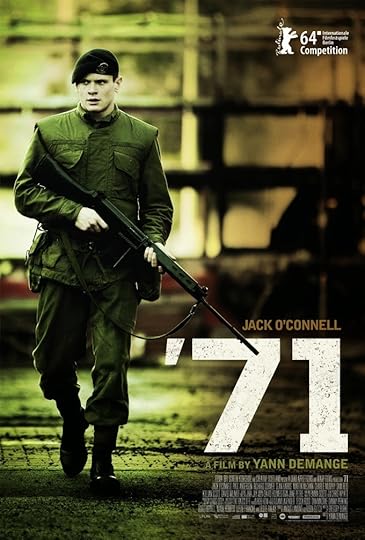 Wow. This is an outstanding movie and something of a classic. It's also a frustrating piece of work. There are three things wrong with it, and they militate against it being a stone-cold masterpiece which otherwise, without question, it would be.
Wow. This is an outstanding movie and something of a classic. It's also a frustrating piece of work. There are three things wrong with it, and they militate against it being a stone-cold masterpiece which otherwise, without question, it would be.First, the good news. This is a fast moving and utterly gripping thriller. It is set in 1971 — of course — and it tells the story of a young squaddie (a British foot soldier) who is sent to Belfast. At this time Northern Ireland was the hellish scene of sectarian violence and terrorism with the Catholics and Protestants at each other's throats and the IRA at war with Britain.
Our hero is Hook, played by Jack O'Connell, who was so great in Starred Up. O'Connell is a gifted actor with a likable quality and a highly expressive face (great smile). He's obviously going to be a big star. That's Hollywood calling, Jack.
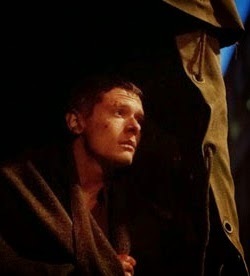 And O'Connell is lucky enough to be in a movie superbly directed by Yann Demange who has a background in TV drama and music videos. '71 is magnificently shot, and made to look like it was filmed on 1971 film stock. The terrific gritty script, which exudes authenticity is by Gregory Burke, a Scottish playwright, famed for his stage drama Black Watch. It always helps when the writer obviously knows his stuff. The movie also has one of the finest music scores of the year, by David Holmes.
And O'Connell is lucky enough to be in a movie superbly directed by Yann Demange who has a background in TV drama and music videos. '71 is magnificently shot, and made to look like it was filmed on 1971 film stock. The terrific gritty script, which exudes authenticity is by Gregory Burke, a Scottish playwright, famed for his stage drama Black Watch. It always helps when the writer obviously knows his stuff. The movie also has one of the finest music scores of the year, by David Holmes.'71 follows the harrowing experiences of Hook when he is separated from his regiment during a riot and is trapped behind enemy lines, fleeing for his life and hiding from IRA gunmen. The characters are beautifully drawn, the dialogue is great (and often hilarious — in the midst of this hellish action).
The script is also particularly strong on the internecine conflicts which divide the IRA, and the IRA's strangely symbiotic relationship with the unscrupulous British intelligence service, supposedly their deadly enemy.
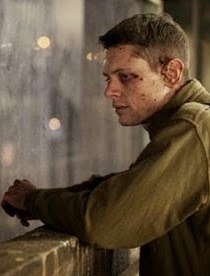 So, why isn't the movie an unqualified masterpiece? Ah, those three things... First, when Hook is on the run, chased by assassins, he has an opportunity to pick up a handgun dropped by one of his pursuers. He doesn't do it. This was so ludicrous it jolted me out of the movie for several minutes afterwards. No trained soldier, indeed no sentient human being, would have acted like this. Such behaviour may serve the needs of the narrative, but it spoils the film — and would have been easy to fix.
So, why isn't the movie an unqualified masterpiece? Ah, those three things... First, when Hook is on the run, chased by assassins, he has an opportunity to pick up a handgun dropped by one of his pursuers. He doesn't do it. This was so ludicrous it jolted me out of the movie for several minutes afterwards. No trained soldier, indeed no sentient human being, would have acted like this. Such behaviour may serve the needs of the narrative, but it spoils the film — and would have been easy to fix.Similarly, Hook needs to cover his army uniform shirt so hostiles won't instantly spot that he's a soldier. And he resourcefully steals a sweater from a clothesline to do just this. But later in the film the sweater gets removed and he fails to put it back on, even though he apparently could easily have done so. Again, a distracting lack of realism.
And the last flaw? Well, despite only being 100 minutes long, this movie has more endings than the Lord of the Rings trilogy. I understand the desire of the film makers to give the characters and situation the resolution they deserve, but this is still self indulgent. Personally I would have ended on the shot of the guy walking down the corridor...
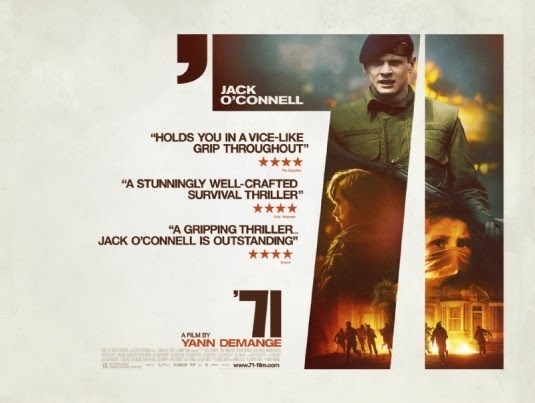 With utter unfairness I've decided to blame all these deficiencies on the director, rather than the writer. Sorry, Yann.
With utter unfairness I've decided to blame all these deficiencies on the director, rather than the writer. Sorry, Yann.None of this is to suggest that you shouldn't see '71 — you should see it immediately. It's just that what is one of the best films of the year could easily have been one of the best films of the decade.
(Image credits: the large (white) movie poster is from Imp Awards. The smaller poster is from Flickering Myths. The stills are from a Guardian review.)
Published on November 02, 2014 01:00
October 26, 2014
Krazy Kat by George Herriman
 I have seldom blogged about comics, but they've been an important part of my life and I still have a lot of love for them, although I seldom read them these days. (On the other hand I do
write
them.) And Krazy Kat was one of the greatest comic strips of all time.
I have seldom blogged about comics, but they've been an important part of my life and I still have a lot of love for them, although I seldom read them these days. (On the other hand I do
write
them.) And Krazy Kat was one of the greatest comic strips of all time.I've been inspired to blog about it now because of an excellent radio documentary which is available here. You can listen to it for approximately the next month, so don't delay.
Created by the bizarre and fertile imagination of George Herriman back before the First World War, Krazy Kat remains startlingly modern — indeed avant-garde — even today. It tells the droll tale of an eternal romantic triangle. A cat (all right, a "Kat") called Krazy is in love with a mouse called Ignatz. The mouse wants nothing to do with her and rather cruelly hurls a brick at her every chance he gets.

Meanwhile a dog — a police dog! — called Offissa Pupp — is hopelessly in love with Krazy, who won't give him the time of day. He has it in for Ignatz, of course, and is always trying to put the mouse in jail for brick-hurling.
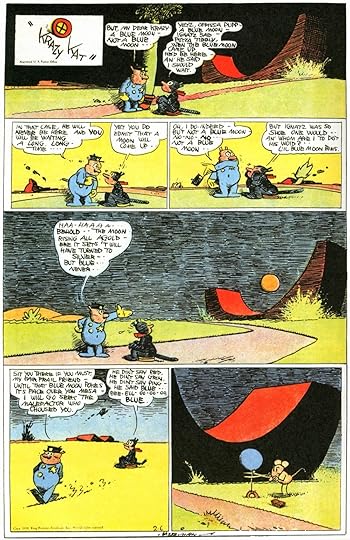
That's basically the whole situation. But the comic ran, with unfailing invention, for thirty years, right up until Herriman died. (A true professional, he left a week's worth of strips on his drawing board when he keeled over.)
Krazy Kat is sustained by wondrous visuals — magical surrealist landscapes inspired by the Painted Desert of Arizona and the indigenous Navajo art. The backgrounds change with each panel, even when the setting hasn't shifted. And a crescent moon might be depicted as a slice of cantaloupe rind.
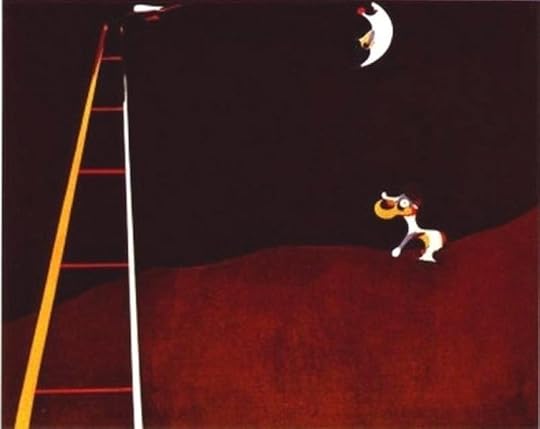 Picasso read Krazy Kat — and was influenced by the art! So was Miro — see the image of Dog Barking at the Moon, reproduced here. Herriman's art is utterly gorgeous, especially when he was given the chance to do weekly Sunday pages in colour.
Picasso read Krazy Kat — and was influenced by the art! So was Miro — see the image of Dog Barking at the Moon, reproduced here. Herriman's art is utterly gorgeous, especially when he was given the chance to do weekly Sunday pages in colour. Herriman was also an inspired writer who made great use of language. His punning wordplay is positively Joycean.

Krazy Kat is hard to describe. You should just check it out. It's definitely oddball stuff, and an acquired taste. But I think it's a taste well worth acquiring.
A couple of interesting footnotes about Krazy Kat...
The strip appeared in newspapers run by William Randolph Hearst, generally regarded as one of the evil robber-baron villains of American history and the real life model for Charles Foster Kane in Citizen Kane. No doubt Hearst was a monster, but I have developed a fondness for him for two reasons.

Firstly, his mistress Marion Davies nicknamed him "Droopy Drawers." Secondly, and more importantly, when various newspaper editors tried to drop Krazy Kat (which wasn't always a huge commercial success), Hearst refused to let them. He championed the strip and allowed it to flourish.
The other footnote concerns the gender of Krazy. Because although she is generally referred to as "she", sometimes he's a "he". Much has been made about this gender confusion, with theories about gay subtexts (or texts!) and the plasticity of sexual identity, etc. etc.

I think it's way simpler than that. Anyone who's ever owned a cat (and George Herriman owned numerous cats) knows that people who aren't intimately acquainted with your pet will randomly refer to it as "him" or "her" — since they just don't know. Herriman was simply making comedy out of this traditional confusion, and adding another surreal dimension to his madcap, krazy, universe.
If you would like to buy collections of Krazy Kat strips, the best place is the wonderful Fantagraphic Books. I recommend the colour volumes.
(Image credits: The Sunday pages are from the useful George Herriman Dot Com. The brick hurling panel is from iDownloads. The book cover, which has nostalgic value for me, because it was the first (of many) Krazy Kat books I bought, is from Chanoyu Records. Don't ask me why. The Miro picture is from Arts Desk.)
Published on October 26, 2014 02:19
October 19, 2014
The Equalizer
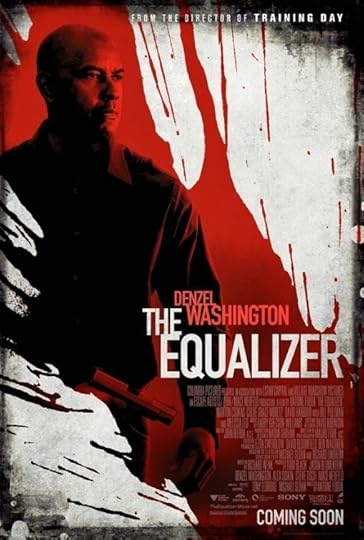 How is it possible to go wrong with a movie like The Equalizer? Based on a successful 1980s TV series (a vehicle for the great British actor Edward Woodward) this new film stars Denzel Washington as an everyman action hero who takes on the Russian mob and wins. He's a vigilante who defends the poor and helpless — against vicious gangsters. It's a perfect, emotive pulp adventure setup and Denzel is ideal for the part.
How is it possible to go wrong with a movie like The Equalizer? Based on a successful 1980s TV series (a vehicle for the great British actor Edward Woodward) this new film stars Denzel Washington as an everyman action hero who takes on the Russian mob and wins. He's a vigilante who defends the poor and helpless — against vicious gangsters. It's a perfect, emotive pulp adventure setup and Denzel is ideal for the part.So, what's not to like? Well, unfortunately, the movie is a mess. It goes hopelessly off the rails in the very first major action scene. Denzel confronts an evil Russian pimp, and offers to buy out the contract of a teenage hooker whom Denzel has befriended (he and the girl frequent the same late night Edward Hopper style diner, in the best scenes of the film).
 Of course, the evil Russian says no and Denzel slays him and all his minions. (Denzel is an average Joe who works in a deadend job at a Walmart clone, but naturally he turns out to be a black ops intelligence super-soldier.) Now, there is nothing wrong with Denzel despatching all these Ruskies. It's the raison d'être of such a film. What is wrong is how he does it.
Of course, the evil Russian says no and Denzel slays him and all his minions. (Denzel is an average Joe who works in a deadend job at a Walmart clone, but naturally he turns out to be a black ops intelligence super-soldier.) Now, there is nothing wrong with Denzel despatching all these Ruskies. It's the raison d'être of such a film. What is wrong is how he does it.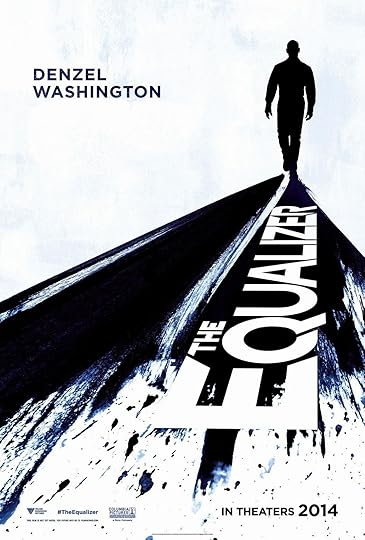 The first evil Russian minion he kills has a gun, and the unarmed Denzel takes it away from him, using his martial arts skills. Does Denzel then use the gun to kill the others? Nope. He discards the gun and picks up a corkscrew. Because that's way more interesting. And similar insanity pervades the rest of the film, with him killing bad guys using a microwave oven, an electric drill, a Gutenberg bible, the Large Hadron Collider... Okay, I lied about the last two, but you get the picture.
The first evil Russian minion he kills has a gun, and the unarmed Denzel takes it away from him, using his martial arts skills. Does Denzel then use the gun to kill the others? Nope. He discards the gun and picks up a corkscrew. Because that's way more interesting. And similar insanity pervades the rest of the film, with him killing bad guys using a microwave oven, an electric drill, a Gutenberg bible, the Large Hadron Collider... Okay, I lied about the last two, but you get the picture.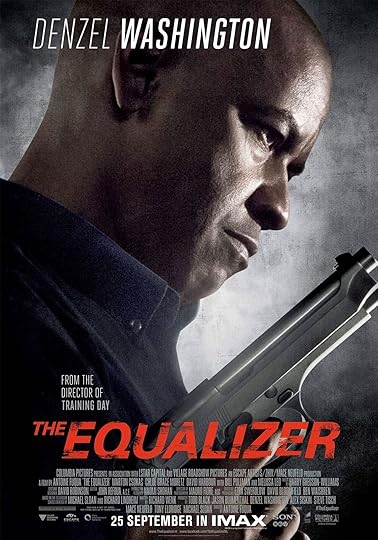 And Denzel is supposed to be a professional, with military training. This is deeply nonsensical stuff, and it helps to sink this deeply silly film. The Equalizer may be a big hit, but it's total junk.
And Denzel is supposed to be a professional, with military training. This is deeply nonsensical stuff, and it helps to sink this deeply silly film. The Equalizer may be a big hit, but it's total junk.If you want to see this sort of thing done right, watch the magnificent TV series Person of Interest.
(Image credits: All the posters are from Ace Show Biz. And don't be fooled by the gun Denzel is holding, in the movie he uses a drill.)
Published on October 19, 2014 02:55
October 12, 2014
Dracula Untold by Sazama & Sharpless
 Dracula has always had certain leading man tendencies, at least as depicted in the many dramatisations of Bram Stoker's novel.
Dracula has always had certain leading man tendencies, at least as depicted in the many dramatisations of Bram Stoker's novel. For an undead bloodsucker, he has generally been allowed a tall dark and handsome cadaver or, in the case of Bela Lugosi, at least had some natty evening wear.
But in recent decades the world's most popular vampire has been recast as a full blown romantic hero, lovelorn and deserving of our sympathy when he isn't busy slaughtering the innocents (see also Hannibal Lecter).
 This has been the standard template for Dracula ever since Francis Ford Coppola's 1992 version of the movie, entitled Bram Stoker's Dracula (though it was a considerable overhaul of Stoker's concept) and, crucially, featuring the tag line 'Love Never Dies.'
This has been the standard template for Dracula ever since Francis Ford Coppola's 1992 version of the movie, entitled Bram Stoker's Dracula (though it was a considerable overhaul of Stoker's concept) and, crucially, featuring the tag line 'Love Never Dies.'But this new and more sympathetic version of the Count doesn't actually originate with Coppola, or his screenwriter James V. Hart. Hart had come up with a script which showed the human side of Dracula — so to speak. The Transylvanian prince had lost his beloved bride and was doomed to spend eternity looking for her.
This concept won the script a green light, but Hart — a talented writer who recently did a fine job on Epic — wasn't the first one to us it. That credit goes to the great Richard Matheson (I Am Legend, The Incredible Shrinking Man, Duel), one of America's finest screenwriters, an excellent novelist and short story writer, and a master of the horror genre.
 Almost twenty years before the Hart/Coppla picture, in 1973, Matheson wrote an outstanding script for a TV movie of Dracula featuring Jack Palance as the Count. Confusingly — but appropriately — it shares a title with the Hart/Coppola version and is also known as Bram Stoker's Dracula. It was produced and directed by Dan Curtis, who had created the cult gothic-horror soap opera Dark Shadows.
Almost twenty years before the Hart/Coppla picture, in 1973, Matheson wrote an outstanding script for a TV movie of Dracula featuring Jack Palance as the Count. Confusingly — but appropriately — it shares a title with the Hart/Coppola version and is also known as Bram Stoker's Dracula. It was produced and directed by Dan Curtis, who had created the cult gothic-horror soap opera Dark Shadows.Crucially, the Matheson script incorporated concepts from Dark Shadows. Most importantly, the idea of the vampire (Barnabas Collins in the TV series) as a doomed Romantic hero with a great lost love.
As I said, this set the template for the brooding and Byronic, rather sympathetic, user friendly fang-meister who is today's cliche, and features most recently in Dracula Untold, playing in multiplexes now. I really enjoyed this movie — in fact, I have to confess I've seen it twice.
 Dracula Untold is directed by Gary Shore, who has a background directing commercials. This is his first feature, which is pretty darn impressive. It is written by Matt Sazama & Burk Sharpless. This is also their feature film debut, and again it's an impressive one. The script is imaginative, effective and fresh — they have actually done some historical research and rooted it in some intriguing factual background. Although in fairness I also have to mention some real silliness in the script — like the blindfolded army.
Dracula Untold is directed by Gary Shore, who has a background directing commercials. This is his first feature, which is pretty darn impressive. It is written by Matt Sazama & Burk Sharpless. This is also their feature film debut, and again it's an impressive one. The script is imaginative, effective and fresh — they have actually done some historical research and rooted it in some intriguing factual background. Although in fairness I also have to mention some real silliness in the script — like the blindfolded army. The cast is excellent. Luke Evans (from The Hobbit) plays Dracula, the Canadian actress Sarah Gadon is ravishing as his beloved (and doomed, naturally) wife Mirena, Dominic Cooper is brilliant as the Turkish Sultan bad guy Mehmed and Charles Dance makes a seriously impressive big daddy vampire.
 Charles Dance is also the big daddy villain in Game of Thrones. And indeed this Dracula flick is a very post-Game of Thrones version. In fact the notable soundtrack music is by Ramin Djawadi, who also scores Game of Thrones.
Charles Dance is also the big daddy villain in Game of Thrones. And indeed this Dracula flick is a very post-Game of Thrones version. In fact the notable soundtrack music is by Ramin Djawadi, who also scores Game of Thrones.The classy cinematography is by John Schwartzman, striking production design by Francois Audouy, lovely costumes by Ngila Dickson (who did The Lord of the Rings) and a special shout-out must go to Joe Hopker for some very groovy hair styles!
Dracula Untold, is a surprisingly good film and well worth a look if you're into horror movies at all.
(Image credits: the posters are all from Ace Show Biz. The shot of Sarah Gadon is from Start News.)
Published on October 12, 2014 02:30
October 5, 2014
Getting it Right: The Guest
 I loved this movie. It just blew me away. It's a down and dirty little thriller with no redeeming social value at all and I just adored it. I see dozens of thrillers every year, and most of them miss the mark, some by a long, long way — such as The Equalizer which I hope to post about soon.
I loved this movie. It just blew me away. It's a down and dirty little thriller with no redeeming social value at all and I just adored it. I see dozens of thrillers every year, and most of them miss the mark, some by a long, long way — such as The Equalizer which I hope to post about soon.But The Guest gets it right. It's a simple tale, rivettingly told, with good characters (beautifully acted, it must be said) and a constant brooding sense of imminent violence — which eventually pays off, both satisfyingly and rather shockingly.
 The story is simple. An American family is grieving for the loss of their soldier son in combat in the Middle East. When the son's friend and fellow soldier turns up to pay his condolences, he soon insinuates his way into the bosom of the family. Yes, you can guess that the 'friend' is not what he seems, but that in no way lessens the pleasure of what follows.
The story is simple. An American family is grieving for the loss of their soldier son in combat in the Middle East. When the son's friend and fellow soldier turns up to pay his condolences, he soon insinuates his way into the bosom of the family. Yes, you can guess that the 'friend' is not what he seems, but that in no way lessens the pleasure of what follows.The film even survives a third act lurch into black ops/corporate conspiracy territory which I was worried would kill it dead. But no, this nifty little dark-hearted action movie just keeps on trucking. It is also often the funniest black comedy since Heathers.
 The Guest is set in a small midwest town around Halloween (gorgeously and moodily evoked by cinematographer Robby Baumgartner) and is in some ways reminiscent of John Carpenter's movie of that name, although vastly superior. It's directed by Adam Wingard, who made a considerable impression with You're Next another superior, scary thriller. The excellent script is by Simon Barrett who also wrote You're Next (while working as a private eye!).
The Guest is set in a small midwest town around Halloween (gorgeously and moodily evoked by cinematographer Robby Baumgartner) and is in some ways reminiscent of John Carpenter's movie of that name, although vastly superior. It's directed by Adam Wingard, who made a considerable impression with You're Next another superior, scary thriller. The excellent script is by Simon Barrett who also wrote You're Next (while working as a private eye!).The thing I liked best about the movie is that the characters are smart: the teenage daughter in the family (Maika Monroe) rapidly susses out that there's something terribly wrong about their guest, and tries to take action... But nothing turns out they way she — or the audience — expects.
 Maika Monroe is terrific. Leland Orser is excellent as the dad. But top honours go to Dan Stevens as the guest himself. He's wonderful in the role. And his American accent is so convincing I had no idea that he was the same Dan Stevens as the British actor in Downton Abbey.
Maika Monroe is terrific. Leland Orser is excellent as the dad. But top honours go to Dan Stevens as the guest himself. He's wonderful in the role. And his American accent is so convincing I had no idea that he was the same Dan Stevens as the British actor in Downton Abbey.Also, notable music by Steve Moore and splendid production design by Thomas Hammock.
A great little movie. A classic. See it.
(Image credits: The black and purple poster is from the Consulting Detective. The rest are from Imp Awards except for the red one, from Abando Movies.)
Published on October 05, 2014 02:21
September 28, 2014
The Anti-Death League by Kingsley Amis
 Continuing my survey of Kingsley Amis's fiction, inspired by reading an excellent biography of Amis, we come to The Anti-Death League. Although it has its flaws, this remains one of my favourite Amis novels and, re-reading it now, I was impressed by how vividly I remembered certain sequences in it from literally decades ago.
Continuing my survey of Kingsley Amis's fiction, inspired by reading an excellent biography of Amis, we come to The Anti-Death League. Although it has its flaws, this remains one of my favourite Amis novels and, re-reading it now, I was impressed by how vividly I remembered certain sequences in it from literally decades ago.Amis was a fan of crime and spy fiction and The Anti-Death League is his attempt at a spy novel. He isn't entirely comfortable with the form — plotting was seldom Amis's strong point and the espionage narrative here is stop-start and often crops up in perfunctory chunks, as if the author's real interest is elsewhere. Which indeed it is. On the other hand, this aspect of The Anti-Death League is fascinating for its relationship with Amis's books about James Bond. He wrote two non-fiction volumes about Ian Fleming's character and, after Fleming's death (and shortly after The Anti-Death League), Amis wrote a 007 novel himself called Colonel Sun which probably remains the best Bond story not written by Fleming.
The Anti-Death League centres on a military base guarding a secret weapon and Amis's army experience during the Second World War is put to good use here. There is a sense of veracity to his soldiers, particularly the way they begin energetically swearing whenever their life is made more difficult (invariably by a superior officer).
 And there are some classic Amis observations about the army, and the British class system, as when describing a character's batman (this odd English term means an officer's servant or butler): "his contempt for politicians... would have been totally admirable if expressed in a better accent." Elsewhere, it is said of a handsome young soldier, "He would have been a good model for a recruiting poster... had it not been for his air of intelligence."
And there are some classic Amis observations about the army, and the British class system, as when describing a character's batman (this odd English term means an officer's servant or butler): "his contempt for politicians... would have been totally admirable if expressed in a better accent." Elsewhere, it is said of a handsome young soldier, "He would have been a good model for a recruiting poster... had it not been for his air of intelligence."The book features a large cast of characters, so large in fact that the author himself grows weary of describing them. "Two men in their thirties... One was very tall and very thin with ears at right angles to his skull. The other was just a man." This is one of the flaws of the book — there are so many characters that the reader loses track of who is who among this extensive roll call.
It doesn't help that the characters are almost all soldiers at the same military base, some with utterly unmemorable names, some of them unmemorable characters, some alternately referred to by their first and last names — some with last names that sound like first names; I give you Captain Brian Leonard.
 All this is a recipe for chaos and incomprehension (I'm still trying to work out who the @£$# 'Alistair' might have been...) and this confusion is aggravated by some clumsy and careless proofreading as in the crucial scene where Max Hunter (one of the few characters I could keep track of) suddenly disappears from the narrative without Amis bothering to tell us he has left the room. And the muddle reaches a frustrating climax at the final grand reveal, where we learn the identity of the spy and I thought... Wait a minute, who the hell is that?
All this is a recipe for chaos and incomprehension (I'm still trying to work out who the @£$# 'Alistair' might have been...) and this confusion is aggravated by some clumsy and careless proofreading as in the crucial scene where Max Hunter (one of the few characters I could keep track of) suddenly disappears from the narrative without Amis bothering to tell us he has left the room. And the muddle reaches a frustrating climax at the final grand reveal, where we learn the identity of the spy and I thought... Wait a minute, who the hell is that?Nevertheless, there are occasional fine moments of action and suspense in the novel and some superb comic characterisation, notably a brilliantly nasty shrink who projects his sexual obsessions onto all his psychiatric patients.
And there is also some quite touching characterisation, like the army padre who is very fond of his dog, who has just become agitated in this scene: " 'It's all right,' he said, stroking her head... 'It's nice of you to worry about me, but there's no need.' "
 Amis's gift for description is also strongly to the fore, as in the spy hunter's alarm at learning of a minor security breach: "Leonard felt as if a hot sponge had been pressed against the back of his neck." Later in the book Leonard wearily parks his car, drained after a long, hard and unsuccessful night of spy-hunting and there he "sat for some moments accumulating the will to get out."
Amis's gift for description is also strongly to the fore, as in the spy hunter's alarm at learning of a minor security breach: "Leonard felt as if a hot sponge had been pressed against the back of his neck." Later in the book Leonard wearily parks his car, drained after a long, hard and unsuccessful night of spy-hunting and there he "sat for some moments accumulating the will to get out."There is also a memorably terse sex scene — "It was fine; it was successful; it was over." — which would have done credit to Dashiell Hammett describing a heist. Or again, when the hero is asked by his friend to disclose the details of a secret mission, and the tension is resolved by a three word sentence: "Churchill told him."
Amis's love of science fiction is also an influence on the novel, not just on his choice of a highly portable tactical nuclear weapon as a MacGuffin for the story, but in his impressive description of it in action: "There was the sharp knocking bang of an ordinary rifle cartridge, and then what might almost have been a small piece of the sun came into being across the valley." The sound is described as a "summarized thunderclap."
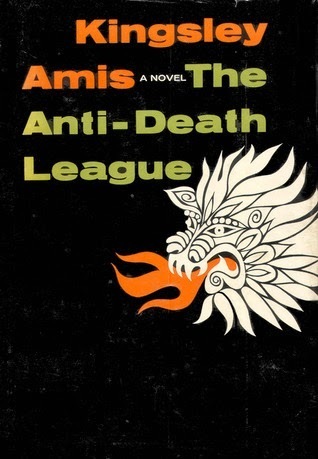 Later on, a sound from a loudspeaker is presented as being "like a brontosaurus clearing its nostrils", an image which recalls the ship's siren which was like an "ogre breaking wind" in Amis's That Uncertain Feeling.
Later on, a sound from a loudspeaker is presented as being "like a brontosaurus clearing its nostrils", an image which recalls the ship's siren which was like an "ogre breaking wind" in Amis's That Uncertain Feeling.There is also a strong science fiction influence at work here in the notion of a "node" of death which the characters are passing through in their lives — dangerous at the edges, deadly at the centre. Although this is arguably more like supernatural fiction, especially in the vendetta one of the character carries out against god — the book could as easily be called The Anti-God League, though admittedly that would be a much more crappy title.
Perhaps the most agreeable, and successful, spy-novel aspect of The Anti-Death League is when one of the characters goes nuts and begins to hilariously describe himself as a character in a sub-Bond style spy novel, averting a pulp-fiction apocalypse and being waited on hand and foot by nude servants: "[His] last exploit had saved the world from destruction by death rays... [his] eye ran lazily over their naked forms." (I'm being coy about his name here because I don't want to spoil any surprises in the book.)
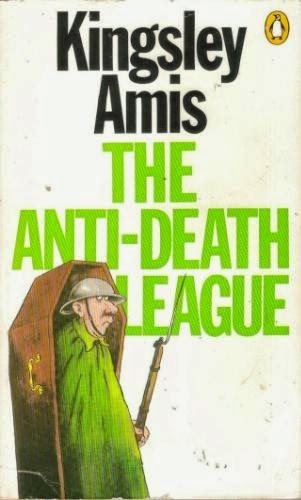 For all that it's full of fun, this is ultimately one of Amis's darkest novel. I also think, despite its numerous deficiencies, it's one of his best — although it is merely a warm up for such splendours to come, in the shape not just of a much more successful spy novel (Colonel Sun) but also a classic ghost story (The Green Man).
For all that it's full of fun, this is ultimately one of Amis's darkest novel. I also think, despite its numerous deficiencies, it's one of his best — although it is merely a warm up for such splendours to come, in the shape not just of a much more successful spy novel (Colonel Sun) but also a classic ghost story (The Green Man).(Image credits: Sparse pickings, just the striking US hardcover and handsome Penguin Modern Classic from Good Reads. The British hardcover with its elegant Raymond Hawkey/Adrian Flowers jacket photo — Amis's first illustrative cover from Gollancz — is taken from an ABE seller and the great — and hilariously misleading — Bond style Ballantine cover is from another ABE seller. The earlier Penguin cartoon cover, by the talented Arthur Robins (misspelled "Robbins") is from Amazon UK. The later Penguin cartoon cover is also by Arthur Robins and is from Amazon dot com.)
Published on September 28, 2014 01:00
September 21, 2014
A Walk Among the Tombstones by Scott Frank
 A couple of weeks ago I wrote a post about Lawrence Block's fine novel A Walk Among the Tombstones (thanks, Miranda!). I concluded by saying I was looking forward to seeing Scott Frank's film adaptation. Well, I've now seen it and I was irresistibly reminded of the days when I was a young teenager illicitly attending what were then called "X-certificate" films — films you had to be 18 or over to see. And not because Frank's movie is an 18-certificate picture, although it is very much that.
A couple of weeks ago I wrote a post about Lawrence Block's fine novel A Walk Among the Tombstones (thanks, Miranda!). I concluded by saying I was looking forward to seeing Scott Frank's film adaptation. Well, I've now seen it and I was irresistibly reminded of the days when I was a young teenager illicitly attending what were then called "X-certificate" films — films you had to be 18 or over to see. And not because Frank's movie is an 18-certificate picture, although it is very much that.What I remember is a particular occasion when I went to the cinema with a bunch of friends. We were all about 15. And we were challenged. Before they let us in to the movie, they asked us how old we were. Each of us in turn said, "I'm 18" — except for one of our party. He faltered and said, "I'm 17." Now, he was 15 just like the rest of us. So his answer has always struck me as very strange. That is, he managed to lie. But he just couldn't bring himself to lie enough.
 This came to mind during A Walk Among the Tombstones because the book was published in 1992 and, due to some technological aspects of the novel, it is very much tied to that period. It was the days of pagers, long before cell phones ruled the earth. And this was crucial to the plot. So I wondered whether Scott Frank would update the movie to make it contemporary, or do it as a period piece (which would enable him to leave some of the subplots intact).
This came to mind during A Walk Among the Tombstones because the book was published in 1992 and, due to some technological aspects of the novel, it is very much tied to that period. It was the days of pagers, long before cell phones ruled the earth. And this was crucial to the plot. So I wondered whether Scott Frank would update the movie to make it contemporary, or do it as a period piece (which would enable him to leave some of the subplots intact).Well, it turns out he's done neither. The movie isn't contemporary or set in 1992. It's set in 1999. For no apparent reason. There's endless references to Y2K in the dialogue, in newspaper headlines, in ads on passing buses and even on a giant graffiti mural Liam Neeson strolls past. But it's all irrelevant, and rather pointless. In other words, Scott Frank managed to backdate the movie, but he just couldn't bring himself to backdate it enough.
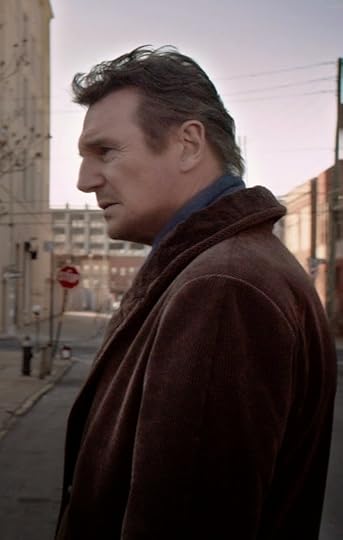 Scott Frank — who is a terrific screenwriter and no mean director — has taken considerable other liberties with Lawrence Block's novel. Some of which are good, others not so much. He's injected the tragic backstory of the hero Matt Scudder as a major element of the movie, cunningly played out, and that works supremely well.
Scott Frank — who is a terrific screenwriter and no mean director — has taken considerable other liberties with Lawrence Block's novel. Some of which are good, others not so much. He's injected the tragic backstory of the hero Matt Scudder as a major element of the movie, cunningly played out, and that works supremely well. But numerous subplots and characters from Tombstones have bitten the dust. Frank has preserved the big setpiece ending with the ransom payment in the cemetery and much of what happens afterwards. And he's kept — and even built up — the role of TJ, who is Matt Scudder's teenage streetkid sidekick. And he's really gone to town on the Alcoholics Anonymous aspect of the book.
 But he's got rid of, for instance, Scudder's callgirl girlfriend — which makes the movie considerably bleaker than the book and has the unfortunate unintended side effect of making Scudder's relationship with TJ seem a bit suspect.
But he's got rid of, for instance, Scudder's callgirl girlfriend — which makes the movie considerably bleaker than the book and has the unfortunate unintended side effect of making Scudder's relationship with TJ seem a bit suspect.Two of Scott Frank's great early screenplays, Out of Sight and Get Shorty were adaptations of novels by Elmore Leonard, and they succeeded largely because Frank remained remarkably faithful to the source material. He even preserved many of the quirky little details. But his approach to Lawrence Block's book seems dramatically different. Maybe he doesn't regard Block as quite so important a novelist as Elmore Leonard. If so, he's mistaken. And if he'd stuck more rigorously to Block's orginal he could have avoided some of the more ridiculous contrivances of the movie and his reworked plot (a sinister network of video shops; counterfeit banknotes with wet ink; a magical escape from handcuffs).
 A Walk Among the Tombstones is a good movie. It's dark and engrossing and well worth seeing. But it's not a great movie. And Lawrence Block's book is a great book. In fact it's a classic of the genre. It's a pity Scott Frank didn't seem to feel the same way. And perhaps therefore he missed coming up with a film which could also have been a classic.
A Walk Among the Tombstones is a good movie. It's dark and engrossing and well worth seeing. But it's not a great movie. And Lawrence Block's book is a great book. In fact it's a classic of the genre. It's a pity Scott Frank didn't seem to feel the same way. And perhaps therefore he missed coming up with a film which could also have been a classic.My verdict? Read the book and then see the movie, and see what you think of the changes Scott Frank made.
(Image credits: Thin pickings at Ace Show Biz.)
Published on September 21, 2014 01:30
September 14, 2014
How Not to End a Movie
 Before I Go to Sleep is an engrossing and clever thriller. It is directed by Rowan Joffe with a script by him based on the novel by S.J. Watson. (Joffe previously wrote an excellent screenplay for the outstanding George Clooney thriller The American.) Before I Go to Sleep is also superbly cast (Nicole Kidman, Colin Firth, Mark Strong) and beautifully photographed.
Before I Go to Sleep is an engrossing and clever thriller. It is directed by Rowan Joffe with a script by him based on the novel by S.J. Watson. (Joffe previously wrote an excellent screenplay for the outstanding George Clooney thriller The American.) Before I Go to Sleep is also superbly cast (Nicole Kidman, Colin Firth, Mark Strong) and beautifully photographed. Unfortunately, it features a final scene so badly miscalculated that it almost nullifies all the positive qualities of the preceding movie. And for anyone interested in movie scripts or film storytelling, it's worth briefly considering what went wrong here...
Inevitably, this is going to involve some spoilers, so if you think you might want to see the movie, I strongly advise you to watch it and only then read this. Thrillers thrive on surprise, and I'm about to let some cats out of the bag.
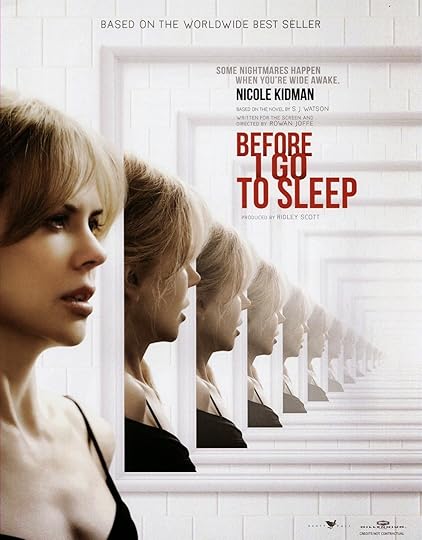 First, however, I'd like to cite another movie which blundered spectacularly in its final moments – and for much the same reason. Billy Elliot was a touching story of a skinny working class kid who wants to be — of all things — a ballet dancer. Against all the odds, and predictable prejudices, he succeeds.
First, however, I'd like to cite another movie which blundered spectacularly in its final moments – and for much the same reason. Billy Elliot was a touching story of a skinny working class kid who wants to be — of all things — a ballet dancer. Against all the odds, and predictable prejudices, he succeeds. And at the end of the movie we jump ten years to watch the grown up Billy in action. Suddenly there's this big hairy bastard we've never seen before, and don't know from Adam, bounding around on stage. The grandiose ending just doesn't work — because we have no emotional investment in this stranger. Who is this big hairy bastard? Where's the plucky, skinny kid whose plight we've come to care about? Catastrophically misjudged, I say.
 Similarly, at the end of Before I Go to Sleep, our amnesiac heroine, played by Nicole Kidman, is reunited with the husband and son she thought she'd lost forever. And we are given to understand that her memory is coming back.
Similarly, at the end of Before I Go to Sleep, our amnesiac heroine, played by Nicole Kidman, is reunited with the husband and son she thought she'd lost forever. And we are given to understand that her memory is coming back. The problem is, we've never seen the husband and son before in the movie. Not as they are now. So they come across as total strangers. And the grand emotional ending has no emotion impact whatsoever. The reaction of the audience is, Who are these jokers?
Rowan Joffe pulls out all the stops for this tearful reunion, pouring on syrupy music and drawing the camera back in a long retreating tracking shot. All to no avail.
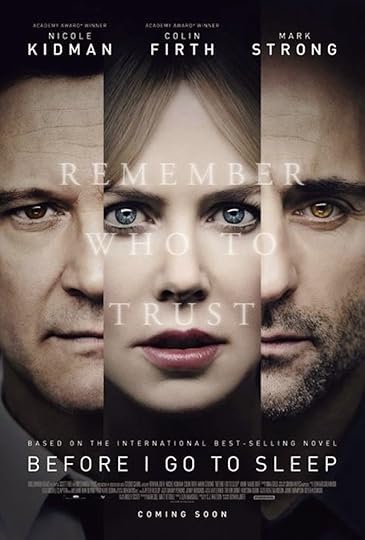 I'm afraid the patient is dead on the table, doc. No amount of electricity shot through this corpse will ever make it sit up. I guess the only way to conceivably make such a scene work would be to cast huge stars as the husband and son. Maybe Johnny Depp for the hubbie. And for the kid — Christ, I don't know — Justin Beiber? That at least would make the audience think they knew these people. But even that might not work.
I'm afraid the patient is dead on the table, doc. No amount of electricity shot through this corpse will ever make it sit up. I guess the only way to conceivably make such a scene work would be to cast huge stars as the husband and son. Maybe Johnny Depp for the hubbie. And for the kid — Christ, I don't know — Justin Beiber? That at least would make the audience think they knew these people. But even that might not work.There is an old screenwriting adage: Show, don't tell. Meaning you should dramatise a scene and actually see it, rather than just try and report it in dialogue. Well, in this case Joffe should have done exactly the opposite. Tell, don't show.
 Do it as a scene between Kidman and Mark Strong as her sympathetic shrink, both of whom we've come to know well throughout the movie, and let their dialogue indicate Kidman's recovery.
Do it as a scene between Kidman and Mark Strong as her sympathetic shrink, both of whom we've come to know well throughout the movie, and let their dialogue indicate Kidman's recovery.I don't want to pillory Before I Go to Sleep, which is otherwise a good film. But this really is how not to end a movie.
(Image credits: All the pictures are from Ace Show Biz.)
Published on September 14, 2014 02:12
September 7, 2014
A Walk Among the Tombstones by Lawrence Block
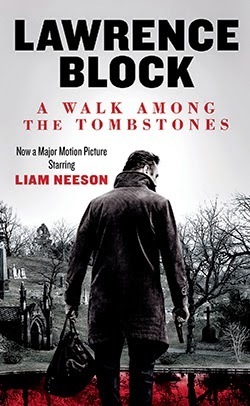 With the exception of Thomas Harris, famed for dreaming up Hannibal Lecter and creating the whole serial killer genre, I would say the greatest living crime writer is Lawrence Block. But whereas we're lucky if we get a Thomas Harris book every ten years, Lawrence Block is blazingly prolific. There are 18 titles in his Matthew Scudder series alone.
With the exception of Thomas Harris, famed for dreaming up Hannibal Lecter and creating the whole serial killer genre, I would say the greatest living crime writer is Lawrence Block. But whereas we're lucky if we get a Thomas Harris book every ten years, Lawrence Block is blazingly prolific. There are 18 titles in his Matthew Scudder series alone.Although I've been increasingly aware of Block and the superlative quality of his writing, I am a late discoverer of this series, having only read my first Scudder novel (which is actually chronologically the tenth) — A Walk Among the Tombstones. Thanks to the magical Miranda, the UK editor of Hard Case Crime, an advance copy of Hard Case's lovely movie edition of Walk Among turned up in the mail the other day. Cue a series of late nights as I sat turning pages, unable to put this powerful, gruelling novel aside.
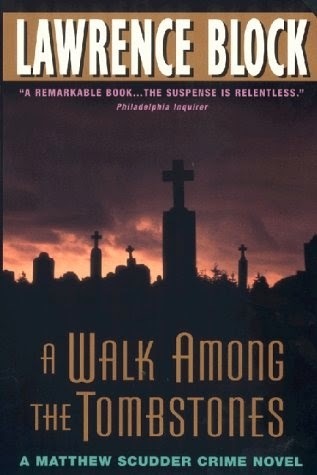 I won't give away much if I reveal that A Walk Among the Tombstones concerns some exceptionally vicious kidnappers. Block's stroke of genius is to make the first victim of these kidnappers a drug dealer, which means he can't go to the police. Instead he goes to private detective Matt Scudder.
I won't give away much if I reveal that A Walk Among the Tombstones concerns some exceptionally vicious kidnappers. Block's stroke of genius is to make the first victim of these kidnappers a drug dealer, which means he can't go to the police. Instead he goes to private detective Matt Scudder.What makes this fictional private eye different from all the others on the market? He's a former cop and reformed alcoholic — nothing new there. But what does distinguish this Scudder novel is simply the brilliance of Block's writing. The plotting is brisk, original, unpredictable and shocking. Great fundamental carpentry. But beyond that we have Block's prose which is of an impressively high order. It's cool, vivid and highly readable. His characterisation is also terrific; I especially like Scudder's streetkid sidekick TJ. And in keeping with this, Block has a knack for smart, authentic-sounding dialogue. Given that his characters include a young black hustler, an old Irish bar owner and a Russian gangster, it's just as well.
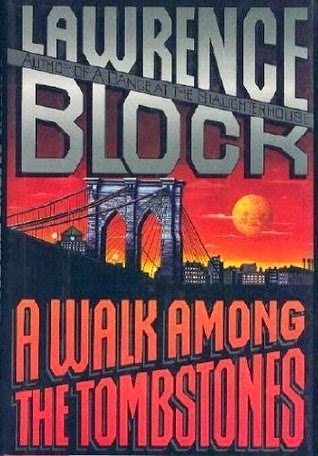 And his dialogue is also often very funny, as in this exchange about a struggling ex-junkie: "He's pissed of at God." "Shit, who isn't?" Or when Scudder and his callgirl girlfriend discuss a very strange woman they've just met. "She was probably on magic mushrooms, or some hallucinogenic fungus that grows only on decaying leather. I'll tell you one thing, she could make good money as a dominatrix." "Not if her leather's decaying."
And his dialogue is also often very funny, as in this exchange about a struggling ex-junkie: "He's pissed of at God." "Shit, who isn't?" Or when Scudder and his callgirl girlfriend discuss a very strange woman they've just met. "She was probably on magic mushrooms, or some hallucinogenic fungus that grows only on decaying leather. I'll tell you one thing, she could make good money as a dominatrix." "Not if her leather's decaying."This dark, sardonic sense of humour pervades the book, which is told by Scudder in the first person. When a computer hacker tries to enlighten him on a technical issue, Scudder ruefully observes, "It was a little like trying to explain the fundamentals of non-euclidean geometry to a field mouse."
 Combine this with a plot driven by relentless and unremitting suspense — there are sequences when you literally won't be able to stop reading — and you have an exceptional novel and a classic crime thriller.
Combine this with a plot driven by relentless and unremitting suspense — there are sequences when you literally won't be able to stop reading — and you have an exceptional novel and a classic crime thriller.What I should warn readers about is that this is a novel which pulls no punches. It's often gruesome and extremely violent. (That pond water in front of Liam Neeson ain't tinted red for no reason.) But this is balanced by the humour, warmth of characterisation and the fact that Scudder is a proper hero. A genuine good guy and urban knight errant. Down these mean streets...
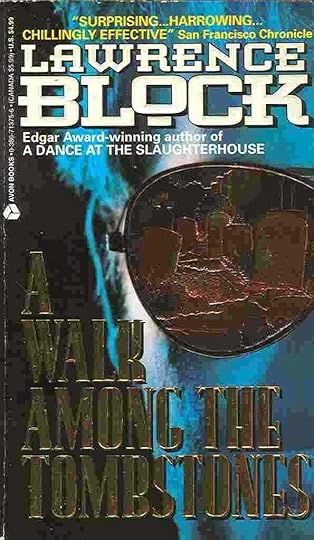
Promisingly, the movie of Walk Among the Tombstones, which is due out soon, stars Liam Neeson and is written and directed by the outstanding Scott Frank. Fingers crossed, we could all be in for a treat. Personally, I'll be first in line when it opens.
(Image credits: With the exception of the lovely film tie-in — thank you, Miranda! — the covers of this great novel are a pretty dull bunch. The Hard Case beauty can be found here at the Hard Case website. The best of the rest is the Avon skull edition, which I gleaned from ABE. The others are from Good Reads.)
Published on September 07, 2014 01:00



